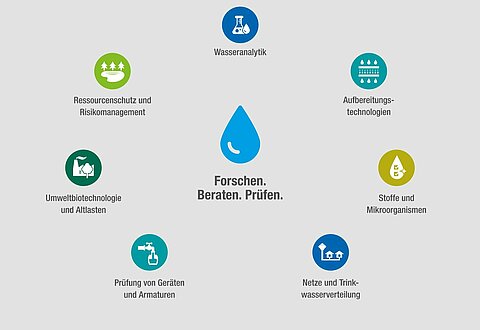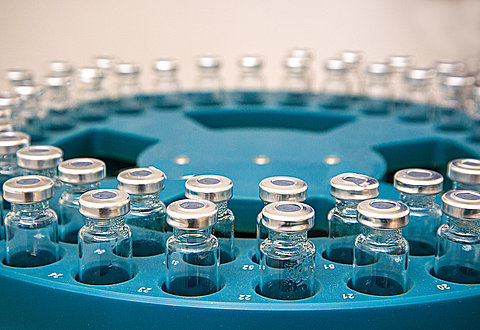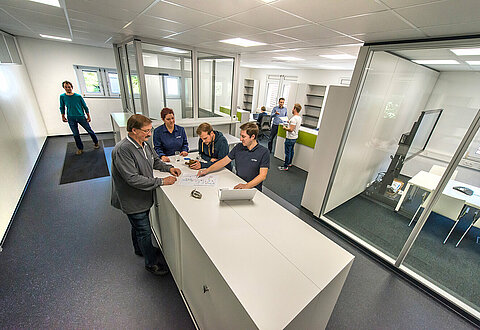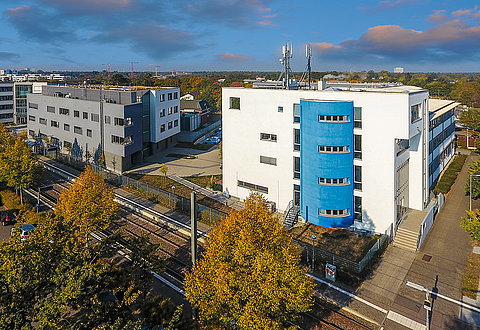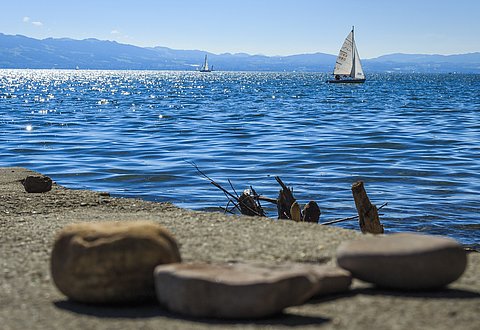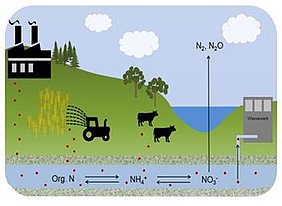Nitrate in groundwater is a serious problem for the water supply in Germany and around the world. In this context, measures to reduce the nitrate content in groundwater and raw water are needed for drinking water protection. The objective of the research project was to develop (i) innovative methods (mRNA, DNA) for monitoring microbial denitrification and (2) an ecologically and economically attractive, biotechnological process to eliminate nitrate from near-surface aquifers.
Nitrate in groundwater has become a serious problem for water supply in many parts of the world. Widespread and intensive agriculture results in increasing nitrate concentrations. In some German regions, drinking water extraction plants can no longer be used without restriction.
Without the microbial denitrification in aquifers, regionally the concentrations of nitrate in groundwater and raw water would be considerably higher
The objective of the research project was to develop an ecologically and economically attractive, biotechnological solution to reduce nitrate from near-surface aquifers. A core development was the construction of in-situ bioreduction zones to eliminate nitrate upgradient of drinking water extraction areas. TZW focused on the determination of microbiological process parameters to design in-situ bioreduction zones (suitability of active substance) and on the development of innovative molecular biological methods to evidence denitrifying bacteria. The suitability of both inorganic and organic electron donors was investigated in column and batch tests. The substrate combination resulting in the highest nitrate reduction was selected for pilot-scale implementation. In parallel, PCR methods were established for the detection of functional genes based on DNA and messanger RNA (mRNA).
The subsequent investigations at the pilot site proved that the selected chemical and microbiological parameters allow a good monitoring of the denitrifying processes, that denitrification can be stimulated by the introduction of starch, vegetable oil and lecithin, and that the injection technology is a suitable method for introducing the substrates. Selected samples from the pilot experiment were examined for hygienically relevant bacteria. E. coli, enterococci and Pseudomonas aeruginosa were not detected in any sample. However, after injection increased coliform counts were recorded. Identification by MADLI-TOF-MS showed that the detected bacteria were environmental organisms (e.g., Raoultella sp. and Lelliottia sp.).
Publication
Schäfer, C.: Nachweis, Dynamik und Stimulation der Denitrifikation in Gewässern. Veröffentlichungen aus dem Technologiezentrum Wasser, ISSN 1434-5765, TZW-Band 98 (2021)
The volumes of the TZW publications can be ordered here.


![[Translate to English:] Prüfstelle-Produktprüfung_Teststand Test centre and product testing](/fileadmin/_processed_/0/9/csm_TZW-Karlsruhe_Pruefung_Geraete-Teststand_444204ae51.jpg)
















